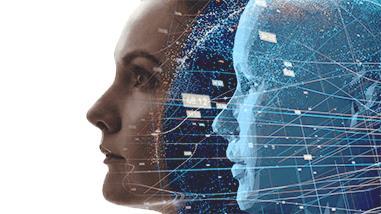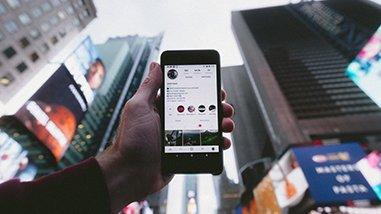Digital twin is the virtual depiction or replica of any physical object or system throughout the lifecycle of it by the inputs from real-time operational data and various sources to bring about better knowledge about the asset for informed decision making. A physical object can vary anything as small as a ball bearing that requires electrical, mechanical and software precision and seamless inter-operation.
Digital twin has moved past the manufacturing sector and has merged with Internet of Things, Artificial Intelligence and data analytics. As more and more complex objects are being connected, the process enables to produce more data to develop a digital replica that further enables scientists and engineers to gather in-depth information to optimize peak efficiency of the object before physically installing it or implementing it by developing scenarios of future possible breakdowns with probable solutions to it.
Digital Twin Application
Mostly used in manufacturing setup, digital twin is quite an advantage in the energy, transportation and construction sectors too. Large and complex objects like aircraft engines, turbines and trains could be digitally designed and tested before being produced. These digital twins are also helpful in maintenance operations, engineers or technicians can seek the digital twin to test before possible fix or upgrade a part of a specific equipment before fixing it on its physical twin.
Creating digital twin with umpteen data requires highly sorted skill sets such as machine learning, AI, predictive analytics and many more science capabilities.
Digital Twin and IoT
With IoT becoming universal, the device sensors used in IoT can be used by digital twin to include small and less complex objects, offering added advantage to companies.
An article by Dave McCarthy cites the reasons of having digital twin to deploy IoT, including the ability of digital twin to foresee various outcomes depending on the variable data. Similar scenario ‘run the simulation’ is often noticed in the Si-Fi movie, where a fictious scenario is depicted within a digital space.
Using added software and data analytics, digital twin can be leveraged to deploy IoT devices for maximum efficiency. In addition, designers can leverage digital twin to ascertain fixing each part into exact device and how to operate before physically deploying. The more a digital twin can replicate a physical object, the higher is the likelihood of replicating the efficiency levels.
According to Dean Hamilton, digital twin and IoT together can revolutionize the manufacturing world. “The more highly instrumented a device is, the more accurately its digital twin will represent its actual historical performance, leading to better analysis and simulation of its future performance,” Hamilton writes.
Problems with Digital Twin
The general approach of digital twin is to demonstrate an insight of the objects or products at operational stage, without highlighting other features or making any comparative study of the product when designed, built and other dynamics of it. It involves a platform creation to line up the characterization of virtual object to translate the complete operational data into the digital twin which enables to comprehensively understand the product performance in comparison to its design intend.
Though digital twin is a virtual image of the product asset in usage in addition to certain predictive analysis and visual elaboration of lifecycle based on predictive algorithm, yet it’s not a complete replacement of ‘inclusive analytics’. Digital twin predictions cannot correlate and map back to product simulation, design modeling and overall lifespan predictive analysis destined at during the design and testing phases. Digital twin can only predict the requirements of parts replacement, it cannot predict a flaw in specific lifecycle of the asset.
Options for Analytics
AI vendors adopt a collective approach of collating and sending all the viable data to create a composite virtual image of a physical object. A virtually created giant asset such as a car has the capability of sending 25GB or more data per hour back to the cloud. The need is creation of algorithm analytics for running the data that is constantly created at the edge of the enterprise network. Analytics or cognitive automation is a mandate to recognize and deliver data to the cloud pro-actively before the networks hit a complete gridlock, that Immersive Analytics vendors often fail to acknowledge nor address.
Digital twins can greatly augment an enterprise’s ability to make proactive, data-driven decisions, enhancing efficiency and evading potential problems. However, it can be a huge challenge for companies to create a digital twin if they would like to try this all at once. Best option is to start in one area, deliver value and continue to develop.
Reference
https://www.zdnet.com/article/the-rise-of-the-digital-twin-why-the-enterprise-needs-to-take-notice/
https://www2.deloitte.com/content/dam/Deloitte/cn/Documents/cip/deloitte-cn-cip-industry-4-0-digital-twin-technology-en-171215.pdf
https://internetofbusiness.com/half-of-businesses-with-iot-projects-planning-to-use-digita-twin/
Internet of Things (IoT) – Future of Technology
Do not miss a Beat
The world has shrunk into an always-on data and knitted into an information network through internet. Data is everywhere, in all facades of life. It is this data that is streamed and connected for better solutions through analytics, helping organizations into better efficiency and building cohesive connect among devices in personal space.
The Internet of Things (IoT) is a concept of gathering and sharing data across various physical devices for actions to be taken through the network. Be it an industrial machinery or a wearable, the built-in sensors transmit the gathered data for an action to be taken across the network. It can be a prior alert about functional failure of any equipment resultant of minutest of error somewhere in the part, or automatically controlling the heating and lighting system of the entire building. In simple words, IoT is making lives easier through intelligent cognizance without human involvement.
The term Internet of Things was casually coined by entrepreneur Kevin Ashton in 1990s and since then it just stayed on and became a growing technology ever after. IoT breaks the barrier of physical and digital worlds, integrating the humanness of ‘things’ to the digital quantum of information system ‘Internet’, thus the name. IoT garnered interest in manufacturing sector for machine-to-machine application, but since then has taken over every aspect of business and life through smart devices; thereby digitally transforming every aspect of personal life and enterprise.
Benefits for Consumer
IoT has already have more things connected across the planet than people. Going by analysis of Gartner, in 2017 more than 8 Bn IoT devices were used, 31% higher than those used in 2016 and the number is estimated to cross 20 Bn mark by 2020.
Manufacturing sector has leveraged high-end sensors’ capabilities via addition to various components of machinery that can monitor and transmit the data on performance and possibilities of damage for proactive actionable and effective monitoring. In addition, organizations have enabled the data generated in making newer systems and enhance efficiency of the overall supply chain.
Business led IoT usage can be categorized into two segments: industry-specific which mostly focus on sensors for real-time location or data generation, secondly those that are vertical-specific such as the IoT smart devices that can be used in lighting and temperature control or security system across any business.
Privacy and IoT
The amount of data generated by the IoTs can tell what time a person wakes up to what is cooking for dinner through the standard data of smart fridge, smart over and so on. What happens to the data that is collected by IoT devices is a primary concern of privacy. Security is a critical aspect since the sensors collect sensitive data 24/7. Its quite easy to breach into the basic security tracks through encryption data in transit and at rest.
Since IoT is a bridge between digital and physical world, a security breach or hacking of these devices can result in catastrophic fall out. The security systems, complete infrastructure and classified information of a country and its citizens can be exposed to adversaries or fall in wrong hands due to the ubiquitous ecosystem of IoT. The added devices of thermostats, cameras and speakers can act as potential spy elements, transmitting the data and key information to unknown centers. The key factors of national infrastructure and security could be at jeopardy if the devices are not adequately secured.
Cyberwarfare and personal security could possibly be compromised due to IoT devices by harvesting and disseminating the big data if not dealt cautiously.
Conclusion
The impact of IoT has been mammoth and yet it is just the beginning of it. What needs to be more prudently thought about and implemented is more than the internet of things. Intelligence of things must take precedence in the future technology by infusing analytics into our systems and applications for the data to be more valid than mere collection of it yet remain highly secured.
Reference
https://www.sas.com/en_us/insights/big-data/internet-of-things.html
https://www.sciencedirect.com/science/article/pii/S0167739X13000241
https://www.zdnet.com/article/what-is-the-internet-of-things-everything-you-need-to-know-about-the-iot-right-now/

